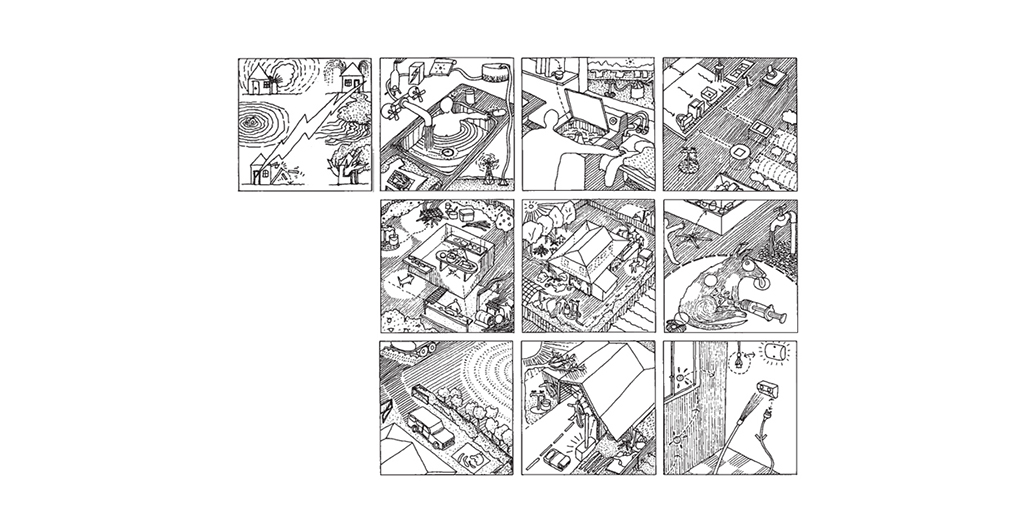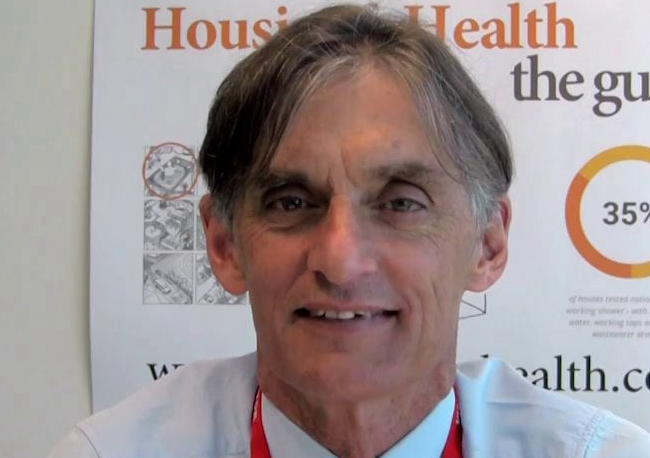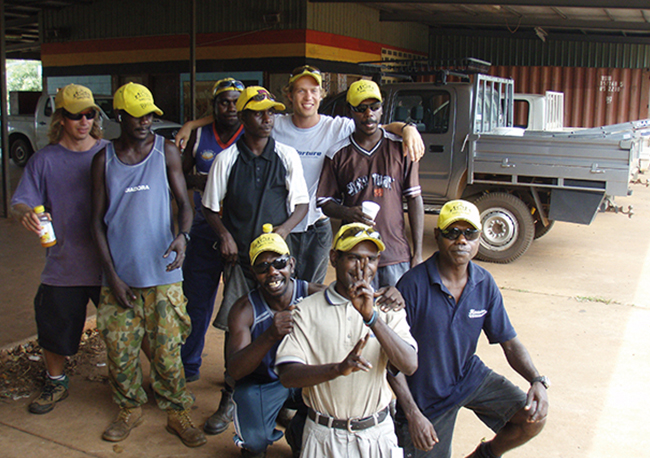
“This is not a wicked problem”: Healthabitat is making housing better for Australia’s Indigenous communities
In his work with Healthabitat, Dr Paul Torzillo has spent more than three decades developing pragmatic, evidence-driven solutions to health problems in some of Australia’s most disadvantaged areas.
Some problems are so complex we label them ‘wicked.’ As the Australian Public Service Commission (APS) explains, “The term ‘wicked’ in this context is used, not in the sense of evil, but rather as an issue highly resistant to resolution.” In a document titled, ‘Tackling wicked problems: A public policy perspective,’ the APS, a policy unit within the Department of the Prime Minister and Cabinet, cites climate change, obesity, land degradation and Indigenous disadvantage as examples.
Aboriginal health, more specifically, is often characterised as wicked. But when it comes to the link between housing and Indigenous health at least, Dr Paul Torzillo says emphatically, “This is not some issue about cultural dissonance. This is not a wicked problem.”
Torzillo is a founding director of Healthabitat. A non-profit company that has been working for more than three decades to identify a quantifiable link between housing and health in remote Aboriginal communities, and to offer solutions to clearly articulated, fixable problems. The company applies a scientific approach to what some have seen as a social and cultural problem.

In 1985, Torzillo was working as a medical officer for the Nganampa Health Council at the Pukatja (Ernabella) health clinic in the Anangu Pitjantjatjara Yankunytjatjara (APY) Lands in South Australia. There he met architect Paul Pholeros (1953–2016) and anthropologist Stephan Rainow. They began working together at the invitation of elder Yami Lester, who could see that people in the community were still getting sick, despite improved health services. In 1987, the trio released a report known as the Uwankara Palyanku Kanyintjaku (UPK) – a plan to “stop people getting sick”, in the local Pitjantjatjara language.
In the UPK, Torzillo, Pholeros and Rainow – who would become the founding directors of Healthabitat – identified a clear link between deficiencies in the built environment and the poor health of community members. The report outlined nine Healthy Living Practices: washing people, washing clothes and bedding, removing wastewater safely, improving nutrition through the ability to store prepare and cook food, reducing the negative impact of over-crowding; reducing the negative effects of animals, insects and vermin; reducing the impact of dust; controlling temperature in the living environment; and reducing hazards that cause physical trauma. These practices are still at the core of what Healthabitat does today.
Healthabitat primarily works on projects that focus on improving health by fixing what Dr Fred Hollows (1929–1993) called “health hardware,” in this case the physical infrastructure in a home that enables occupants to undertake the nine Healthy Living Practices. Since 1985, licensed contractors overseen by Healthabitat have completed some 287,919 repair jobs, mostly in remote Indigenous communities. But recently they also conducted projects in densely populated urban areas in both Australia and the USA. “And those projects have provided data to support the important thesis that poor housing is not an issue of indigeneity,” Torzillo says, “it is an issue of poverty.”
While a common misconception persists that occupants in remote Aboriginal communities have destroyed their own homes, Healthabitat’s extensive collection of data has demonstrated that vandalism (or even unsuccessful repair work) accounts for only seven percent of damaged health hardware. Overwhelmingly, poor design, poor material choices, shoddy or incomplete initial construction (19%), and lack of routine maintenance (74%) are the factors that lead to substandard infrastructure in the homes that they have worked on. As Torzillo puts it, “We have found that you can improve health hardware in these communities for an affordable cost. And we have also shown that the key reasons that these houses aren’t performing are not reasons which are philosophical, or race related, or even occupant dependent. They are issues that are fixable.”

This all seems fairly straightforward. After all, the link between sanitation and health has been widely accepted since at least the Victorian era. A functioning toilet, kitchen and shower should be standard in all homes, and yet the problem of healthy housing in Indigenous communities is ongoing. Which is not to say that Healthabitat has not had some success. “I think what we have done is we have unequivocally changed the language and the rhetoric around housing in Australia. So at every housing conference somebody talks about the nine Healthy Living Practices, and at every conference people talk about housing for health, and most bureaucratic statements include language that would suggest that they are adopting the principles,” Torzillo explains. “The difficulty is in the implementation.”
Despite clearly defined solutions and quantifiable evidence that its projects work, Healthabitat’s methodology has yet to be meaningfully translated into Federal and State government policy within Australia. When asked why, Torzillo admits that there is no easy answer. For him, “the hard question”, as he puts it, is why do those in authority insist on labelling the problem as ‘wicked’?
Tackling this question is one of the reasons Healthabitat became an industry partner on a Housing for Health Incubator, led by Professor Tess Lea and facilitated by the Henry Halloran Trust. Beyond the big, complex ‘why’ questions, Lea and her team are also examining the interactions between politics and bureaucracy and probing the ‘how.’ They are asking questions, Torzillo says, such as: “How is it that we are still building houses that don’t perform? How is it that we are losing housing stock because we don’t have sustainable maintenance systems? How does that happen?” Their research, which will conclude later this year, also addresses another apparently wicked problem: climate change.
As Torzillo explains, “Our work started with me thinking predominantly about child health, predominantly about infectious disease and the impact of washing and waste disposal in the 1980s. Most of that still stands, but now there is a whole other set of issues.” Climate change is perhaps the issue of our times, and it is already hitting hard in the communities Healthabitat works with. “Lots of remote communities now have temperatures in the high 40s and low 50s centigrade. And they are not going to have the money to afford the energy to control temperature. So communities are going to be threatened by that,” Torzillo says. “This is a big issue right now. So we want to bring that into the centre of what we’re doing.”
With this in mind, the Henry Halloran Trust Incubator is looking at updating, modernising, and refocusing Healthabitat’s work with an emphasis on the impact of the climate crisis on housing for poor people. As Torzillo points out. “It’s not a future issue, it’s a here-and-now issue.”
–
Tracey Clement is an artist and writer based in Sydney, Australia.
This article is part of Foreground’s Transformative Landscapes themed series of essays. Lily Jencks will be talking at Foreground’s associated event at the NGV 19 March 2020. Click here for tickets.


